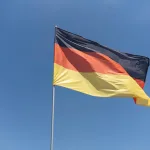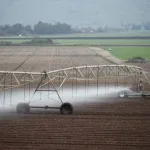- Business
Browse Business
- Technology
Browse Technology
Latest in Technology
Machine Learning Offers New Way to Predict Plant Water Use, Israeli Study Finds
5 minutes agoCyberDome Drill Highlights Growing Digital Threats to Israel’s National Systems
1 hour agoAfter Nova Massacre, Israeli Startup Builds Tech to Keep Families Connected in Crisis
4 hours agoFusion Control Breakthrough Brings Clean Energy Closer
4 hours ago - Politics
Browse Politics
Latest in Politics
Israel’s High Court Overturns Government’s Attempt to Remove Attorney General
2 days agoNegev Cities to Receive $31.8M Boost for Housing, R&D, and Airport Plans
5 days agoIsrael, Bolivia Restore Diplomatic Relations
6 days agoCyber Weaknesses Put Israeli Elections, Democracy at Risk, State Comptroller Warns
1 week ago - Security
Browse Security
Latest in Security
CyberDome Drill Highlights Growing Digital Threats to Israel’s National Systems
4 minutes agoAfter Nova Massacre, Israeli Startup Builds Tech to Keep Families Connected in Crisis
3 hours agoIranian Missile Fragments Become Symbol of Hope at Reopened Israeli Care Facility
1 day agoIran Suspected in Deadly Sydney Chanukah Shooting
2 days ago - Economy
Browse Economy
Latest in Economy
Israeli Exports on the Rise, Approaching Pre-War Peak
2 minutes agoTrade Momentum Builds as German Business Leaders Visit Israel
3 hours agoNegev Cities to Receive $31.8M Boost for Housing, R&D, and Airport Plans
5 days agoHaredi Enlistment Would Ease Army and Economic Strain, Bank of Israel Says
5 days ago - Crime
Latest in Crime
Iran Suspected in Deadly Sydney Chanukah Shooting
2 days agoIsrael’s Anti-Corruption Chief Investigated for Alleged Ties to Crime Network
6 days agoIsraeli Police Probe Fatal Shooting as Arab-Sector Murder Toll Climbs to 241
6 days agoIsraeli Authorities Charge Ashkelon Resident Over Months-Long Ties to Iranian Operatives
2 weeks ago - Society
Browse Society
Latest in Society
Iranian Missile Fragments Become Symbol of Hope at Reopened Israeli Care Facility
1 day ago‘Vile’: Israeli Leaders Condemn Deadly Sydney Chanukah Attack
2 days agoIsrael’s High Court Overturns Government’s Attempt to Remove Attorney General
2 days agoOne Dead, Dozens Rescued as Storm Byron Sweeps Across Israel
5 days ago - Services
Travel & Transportation
Technology & Utilities
Religious & Cultural
Information & Directories
Government & Public Services
Jerusalem, 11 August, 2025 (TPS-IL) — Israel’s Ministry of Agriculture and Food Security announced that it is now possible to import grapes from Peru. The grapes join the blueberries already imported from this country. The approval was given after a review of a pest risk assessment, which was conducted by the professional bodies in the Plant Protection and Inspection Services of the Ministry of Agriculture and Food Security and in cooperation with the Plant Protection Authority of the Ministry of Agriculture in Peru.
The agreements between the countries to implement the import of grapes into Israel are part of a broad process led by the Plant Protection and Inspection Services at the Ministry of Agriculture and Food Security. As part of this process, the ministry is working to diversify the sources of imports in order to increase competition in the fruit and vegetable market. Meanwhile, in the past three years, the Plant Protection and Inspection Services at the Ministry of Agriculture and Food Security have approved 15 types of fruits and vegetables for import from 16 countries of origin, such as: kiwi from Greece, melon from Spain, tomatoes, cucumbers and blueberries from a variety of different sources, and more.
Since the beginning of the war, approximately 15,000 tons of grapes have been imported to Israel from South Africa alone. This import takes place during the winter months, when there is no local production but demand exists, and the only source of import that was approved until now is South Africa. The new source allows for competition between import sources during the winter months.




















